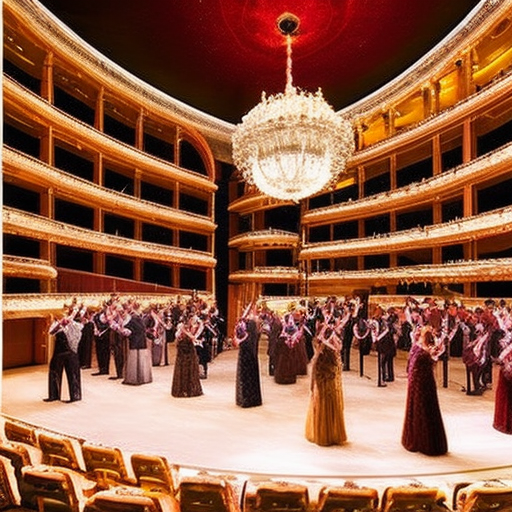Summary: Opera is a form of theatrical art that combines music, drama, and visual elements to create a complete artistic experience. It originated in Italy in the late 16th century and has since become a popular and influential art form worldwide. Opera is characterized by its use of trained singers, elaborate sets and costumes, and arias, which are solo songs that express the emotions and thoughts of the characters. It encompasses a wide range of styles and genres, from classical opera to contemporary works.
History of Opera
Opera has its roots in the Renaissance period, when scholars and artists sought to recreate the drama of ancient Greek theater. The first opera, “Dafne,” was composed by Jacopo Peri in 1597. The genre quickly gained popularity in Italy and spread to other European countries. In the 17th and 18th centuries, opera flourished in Italy, with composers such as Claudio Monteverdi and Antonio Vivaldi contributing to its development. The 19th century saw the rise of Romantic opera, with composers like Giuseppe Verdi and Richard Wagner pushing the boundaries of the art form.
Elements of Opera
Opera combines various artistic elements to create a unique experience. The music is a crucial component, with composers writing scores that enhance the drama and emotions of the story. The libretto, or the text of the opera, is written by a librettist and is usually sung in the language of the audience. The singers, known as opera singers or vocalists, undergo extensive training to develop their voices and perform the demanding roles. The staging of an opera involves sets, costumes, lighting, and props, which help create the visual world of the story.
Types of Opera
Opera encompasses a wide range of styles and genres. Classical opera, also known as opera seria, refers to the serious and formal operas of the 18th century. Comic opera, or opera buffa, is a lighter and more humorous form of opera that emerged in the same period. Grand opera, popular in the 19th century, is characterized by its large-scale productions and dramatic storylines. Bel canto opera, a style prominent in the early 19th century, focuses on the beauty of the vocal melodies. Modern and contemporary opera, such as those composed by Benjamin Britten and Philip Glass, explore new musical and dramatic possibilities.
Famous Operas and Composers
Some of the most famous operas include “The Marriage of Figaro” by Mozart, “La Traviata” by Verdi, and “Carmen” by Bizet. These works have become staples of the opera repertoire and are regularly performed in opera houses around the world. Other notable composers include Wagner, Puccini, Rossini, and Handel, each contributing to the rich and diverse history of opera.
Opera Today
Opera continues to be performed and appreciated worldwide. Major opera houses, such as the Metropolitan Opera in New York and La Scala in Milan, attract audiences with their grand productions and renowned performers. In addition to traditional opera houses, opera is also staged in alternative venues and adapted for contemporary audiences. The accessibility of opera has increased through broadcasts, recordings, and live streaming, allowing people to experience this art form from the comfort of their homes.
In conclusion, opera is a complex and captivating art form that combines music, drama, and visual elements. It has a rich history and encompasses a wide range of styles and genres. Opera continues to thrive in the modern world, captivating audiences with its powerful performances and timeless stories.












